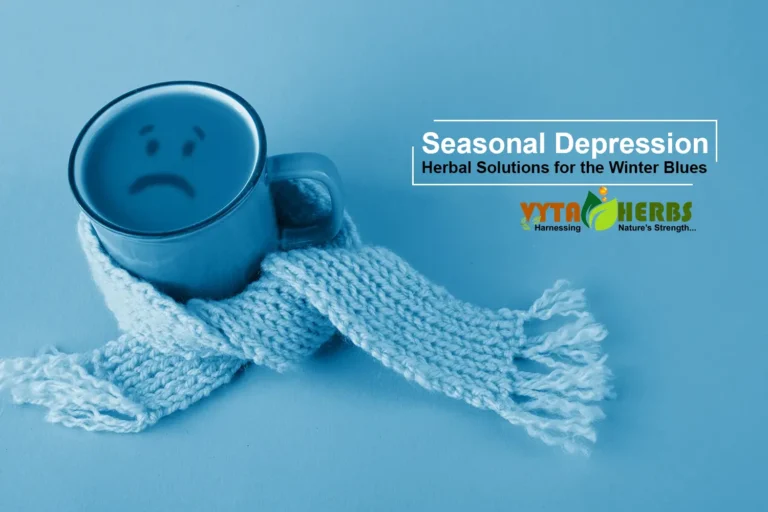Have you ever gone through your blood report and stumbled upon the term “eosinophilia” without knowing what it truly means? Many individuals face this scenario, often unsure whether to worry or ignore the result. Eosinophilia isn’t a disease itself, but a condition that can reflect something deeper occurring in your body. At Vyta Herbs, we believe in educating our readers about common health concerns and how natural lifestyle changes and herbal support can aid recovery. In this article, we will explore what eosinophilia is, its causes, normal range, symptoms, and natural ways to manage or support its treatment.
What is Eosinophilia?
Eosinophilia is a medical term used when the level of eosinophils—a specific type of white blood cell—in your bloodstream becomes abnormally high. Eosinophils play an important role in your immune system. They help defend against parasitic infections and are also involved in allergic reactions. In small amounts, they are vital. But when their number rises too high, it may be a signal that your body is dealing with an infection, inflammation, or allergic response.
White blood cells like eosinophils are part of the body’s natural defense army. However, an overproduction can cause the immune system to react in ways that can result in inflammation or tissue damage—especially if the cause of the increase remains untreated for long.
What is the Normal Eosinophil Range?
In healthy individuals, eosinophils typically make up about 1% to 6% of the total white blood cell count. In absolute numbers, this translates to approximately 100 to 500 cells per microliter of blood.
When this count exceeds the normal level, it is categorized as follows:
- Mild eosinophilia: 500 to 1,500 cells/μL
- Moderate eosinophilia: 1,500 to 5,000 cells/μL
- Severe eosinophilia: More than 5,000 cells/μL
It’s essential to note that a slightly elevated count doesn’t always signal danger. Sometimes, it might be a temporary spike due to minor allergies or seasonal exposure. But a persistently high count could require medical evaluation.
Common Causes of Eosinophilia
The underlying causes of eosinophilia can vary, and they are often linked to an overactive immune response. Some common contributors include:
1. Allergies
Conditions such as asthma, hay fever, and allergic rhinitis are among the leading causes of raised eosinophils. Exposure to dust, pollen, molds, and even certain foods can trigger this immune reaction.
2. Parasitic Infections
In many tropical regions, parasitic infections like roundworms, hookworms, and giardiasis are frequent culprits. These parasites provoke an immune reaction that leads to an increased production of eosinophils.
3. Autoimmune Conditions
Diseases where the body’s immune system attacks its own tissues, such as lupus, celiac disease, or ulcerative colitis, can also result in eosinophilia.
4. Drug Reactions
Some people may experience an adverse response to medications like antibiotics, non-steroidal anti-inflammatory drugs (NSAIDs), or anticonvulsants, which can manifest as elevated eosinophils.
5. Skin Disorders
Conditions such as eczema, psoriasis, and dermatitis are known to increase eosinophil count due to skin inflammation.
6. Cancer or Bone Marrow Disorders
In rare cases, certain cancers, particularly those affecting the blood or bone marrow like leukemia, may cause extremely high eosinophil levels.
Signs and Symptoms of Eosinophilia
Many times, eosinophilia itself does not produce visible symptoms unless it becomes severe or causes inflammation in organs. However, some signs that may indicate the presence of an underlying issue include:
- Chronic cough or wheezing
- Skin rashes, hives, or itching
- Shortness of breath
- Abdominal pain
- Fatigue or weakness
- Weight loss (in chronic or serious conditions)
- Nasal congestion or sinus infections
If any of these symptoms persist alongside a high eosinophil count, it is important to consult a physician for proper diagnosis and treatment.
Natural Ways to Manage Eosinophilia
Managing eosinophilia naturally involves addressing the root cause and making thoughtful lifestyle changes. Here are some natural remedies and habits that can help support recovery and prevent recurrence:
✅ 1. Identify & Eliminate Allergens
Getting an allergy test can help pinpoint specific allergens that may be contributing to the elevated eosinophil count. Avoid exposure to dust mites, pollens, mold, and food allergens as much as possible.
✅ 2. Boost Immunity with Herbal Supplements
Ayurvedic and herbal ingredients such as Shilajit, Tulsi, Neem, and Ashwagandha are known for their immune-regulating and anti-inflammatory properties. Vyta Herbs’ Pure Himalayan Shilajit Resin is one such natural supplement that may help in reducing inflammation and enhancing the body’s adaptive response.
✅ 3. Use Omega-3 Fatty Acids
Fish oil supplements rich in omega-3 fatty acids (EPA and DHA) are highly effective in reducing inflammation. These can support the body in restoring balance and minimizing unnecessary immune responses.
✅ 4. Follow an Anti-Inflammatory Diet
Include foods that naturally fight inflammation such as:
- Turmeric and black pepper
- Leafy greens like spinach and moringa
- Garlic and ginger
- Berries, flaxseeds, and walnuts
Avoid processed foods, refined sugar, fried items, and dairy, especially if you have known sensitivities.
✅ 5. Stay Hydrated and Active
Drinking adequate water helps in detoxifying the system. Light exercise and breathing practices such as pranayama or yoga can improve circulation, reduce stress, and boost overall immunity.
✅ 6. Regular Deworming
In regions where parasitic infections are common, routine deworming under medical supervision is recommended. Natural antiparasitic herbs like papaya seeds, clove, and neem may help, but should not replace prescribed medication.
When to Seek Medical Attention?
Natural remedies are supportive, but persistent or severe eosinophilia may require more than just lifestyle changes. Seek professional help if:
- Your eosinophil count is above 1,500/μL for more than a few weeks.
- You experience unexplained weight loss, fatigue, or breathing issues.
- There is suspicion of organ involvement (lungs, skin, digestive tract).
- You have recurrent infections or chronic allergy symptoms.
A doctor may conduct further blood tests, imaging studies, or even a bone marrow biopsy depending on the situation.
🧘♂️ Holistic Healing with Vyta Herbs
At Vyta Herbs, we advocate the synergy of natural herbs, clean nutrition, and preventive care. Our range of wellness products, including Pure Himalayan Shilajit, Omega-3 Fish Oil, and immune-boosting herbal blends, are crafted to support your health journey in the most natural and effective way possible.
Conclusion
Eosinophilia might seem like a technical term buried deep in your blood report, but it is actually a helpful signal from your body that something needs attention. Whether it’s an allergy, infection, or a deeper immune issue, understanding the cause and acting early can help you avoid complications. Managing eosinophilia through a balanced lifestyle, herbal remedies, and awareness can lead to sustainable health and immunity.
If you found this post useful, explore other educational articles on the Vyta Herbs Blog, where we simplify medical topics, offer natural health tips, and bring ancient herbal wisdom to modern life. Stay informed, stay healthy—naturally.







